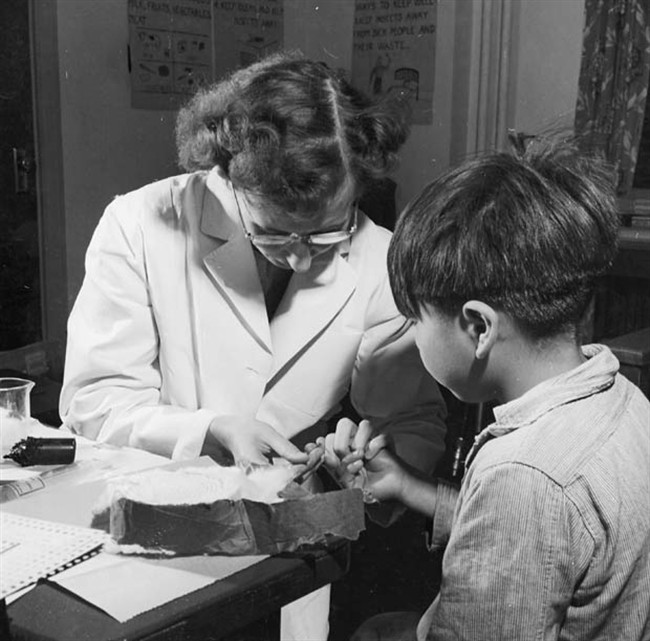WINNIPEG – The vast majority of claims filed by Indian residential school survivors seeking extra compensation for medical injuries are for hearing loss, respiratory illnesses and broken bones.

The Indian Residential Schools Adjudication Secretariat – an independent body which helps resolve long-standing claims that address specific abuse of survivors – says just over 1,000 medical assessments completed so far focus primarily on ear, nose and throat ailments, as well as broken bones.
A request for proposals put out by the secretariat says 60 per cent of the assessments involve the ears, nose and throat, while 21 per cent involve orthopedics. Secretariat spokesman Michael Tansey confirmed the figures, but said no one could comment further on the nature of the claims.
Marie Wilson, commissioner for the Truth and Reconciliation Commission, said lasting injuries are not surprising, given the way residential school students were treated.
READ MORE: Aboriginal leaders renew calls for missing, murdered women inquiry
“We have had many, many people talk to us about the physicality of the punishment which often was a cuff on the ear or being pulled by the ear or being dragged across the room by the ear,” she said in an interview.
“People talked to us about hearing loss that came with being whacked at the side of the head. That seemed to have been something that happened on a very common basis at some of the institutions,” she said.
- Life in the forest: How Stanley Park’s longest resident survived a changing landscape
- Bird flu risk to humans an ‘enormous concern,’ WHO says. Here’s what to know
- Roll Up To Win? Tim Hortons says $55K boat win email was ‘human error’
- Election interference worse than government admits, rights coalition says
“There were a number of accounts of children being very severely physically treated including sometimes being thrown downstairs or shoved downstairs.”
About 150,000 First Nations, Inuit and Metis children were taken from their families and forced to attend the government schools over much of the last century to “take the Indian out of the child.” The last school closed outside Regina in 1996.
The federal government formalized a $1.9-billion compensation package for former residential school students that offers a base payment. Those who experienced sexual or physical abuse can pursue additional compensation through the independent secretariat.
Unlike testimony given to the Truth and Reconciliation Commission, secretariat hearings are strictly confidential. An Ontario judge is mulling over whether that private testimony should be destroyed once a claim is paid out.
READ MORE: Keep sensitive accounts of residential school survivors, judge urged
Many of the former students who testified before the commission talked about being exposed to the elements without proper clothing, which could explain some of the injuries, Wilson said. Some students had extreme frostbite, inflamed ears and bleeding from the ears as a result of their exposure, she said.
“Many children talked to us about being extremely cold, being under-dressed, trying to get back into the school, the doors being locked and not being allowed back in until the designated recess or lunch time was over.”
Broken bones or even lost limbs were not unusual, Wilson added. Children often spent half their day in forced manual labour to contribute to the school’s operation, she said. They were involved in activities with dangerous equipment such as baking, laundry and farming activities.
One particular machine used to make bread was known as “the mangler,” Wilson said.
“It was very much like we see about, hear about, read about in the context of prison environments, where the inmates are involved to keep the facility going. So, too, it was for the schools.”
Because Canada has taken so long to address this part of its history, survivors with a claim are aging. There’s now a debate over whether their medical condition is the result of a childhood injury received at a residential school or just part of aging, Wilson said.
“There’s a need now to … differentiate between those so that the calculations are fair and honest and people are given fair credit for the things they have been carrying around with them for all these decades.”
The secretariat estimates up to 700 more medical assessments need to be done over the next two years – 80 per cent of them in British Columbia, Alberta, Saskatchewan and Manitoba.



Comments